Behind the Body: Preparing for Kona with 2014 champ Mirinda Carfrae
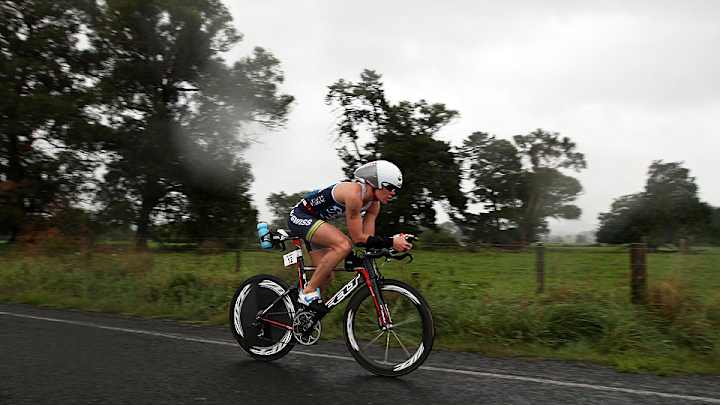
She hails from the land Down Under, but for this Australian native, training for the Ironman World Championship and receiving a crack at the opportunity to be crowned the best triathlete on earth is truly a life-altering dedication.
“I’m continually working to improve and push my limits further and further,” says 2014 IWC champion Mirinda Carfrae, who claimed her second straight title—third overall. “It’s the whole package of training and racing, and developing as an athlete year upon year. I love it.”
Last year, it was more than basic focus and standard physical ability that came into play when Carfrae crushed the race’s 26.2-mile marathon segment and claimed a new women’s running record. Her body went through an aerobic transformation that can only be described as amazingly explosive.
- MORE EDGE: Making the case for more Ironwomen in Kona
“No one aspect of training enables that sort of performance,” explains Carfrae, who also last year set a women’s world championship course record. “Instead, it's the 15 years of consistent, dedicated training and the collective experience. If I were to name what I consider my top talent, it would have to be my resistance to injury, enabling me to train consistently year-in and year-out. I have never had an injury that has stopped me from training, which is fairly rare in our sport.”
Ahead of the Ironman World Championship on Oct. 10 in Kona, Carfrae provided SI.com with detailed insight into her training and nutrition, and what’s required to reach the apex of the triathlon community.
AGE | HEIGHT | WEIGHT |
|---|---|---|
34 years old | 5-foot-3 | 118 lbs. |
Body fat percentage: “I honestly have no idea.”
Training regimen in preparation for the IWC: “This can vary somewhat depending on a variety of factors—for example, the volume will decrease if I’m doing a race on the weekend, or I’ll skip sessions and rest if I become ill. But a snapshot of an average high-volume week geared toward Ironman includes 30-35 hours of training. That includes six swims, seven runs and five rides totaling 20 km swimming, 450 km on the bike and between 80-100 km running, plus two to three gym sessions.”
Unique training techniques: “Not really, I’m fairly straightforward and old school. Aside from a lot of swimming, biking and running, I do gym work with Erin Carson, who is an excellent strength and conditioning coach at Rally Sport in Boulder, Colorado. We focus on strength, functional movement and plyometrics.”
On training at a certain percentage of maximum heart rate and focusing on oxygen uptake: “Again, I’m into old school training—easy means easy, hard means hard. Two of my weekly runs, two of my weekly rides and two to three of my weekly swims are at a hard intensity. I know there are a number of theories and techniques for more complex numbers-based training, and many people wonder what that secret sauce might be at the world champion level. For me, it boils down to years of dedicated hard work and tried-and-true old school techniques—hardly rocket science.”
Gordon Haller Q&A: Winning the first Ironman, race evolution and more
Regimen and tapering in the weeks immediately before the IWC:
Nutritional intake before the race: “I start to carb-load 48 hours before the race. I cut out fiber and mostly increase my caloric intake through calorie-rich fluids. In my experience, especially with the reduced training intensity, overeating just makes me feel bloated. … The night before the race I always have the same meal: chicken and rice, and salt. It’s super simple and easy to digest.”
About Kona’s physical demands: “Any Ironman race is taxing on the body but Kona is a different animal, entirely. First off, the ocean swim is super salty. That’s great for buoyancy since you don’t wear a wetsuit, but can also cause your lips and mouth to feel a bit swollen, and if you miss a spot when lubing up, you can have horrible chafing from your speed suit.
“[During] the bike, the heat and humidity kick in, along with the wind. The degree of difficulty is hugely influenced by Madame Pele—if it’s a windy year, there are extra factors to account for. It’s absolutely critical to hydrate and fuel steadily throughout the day, but if you’re white-knuckling your bars for fear of being blown over—it happens—it’s easy to forget to reach for food or a bottle. Also, when the wind evaporates your sweat quickly, you may have a false sense that you’re not losing too much fluid through sweat. Bottom line, if you stay on plan and hydrate and fuel steadily from the get-go, you’ll be fine. Anything short of that means almost certain failure.
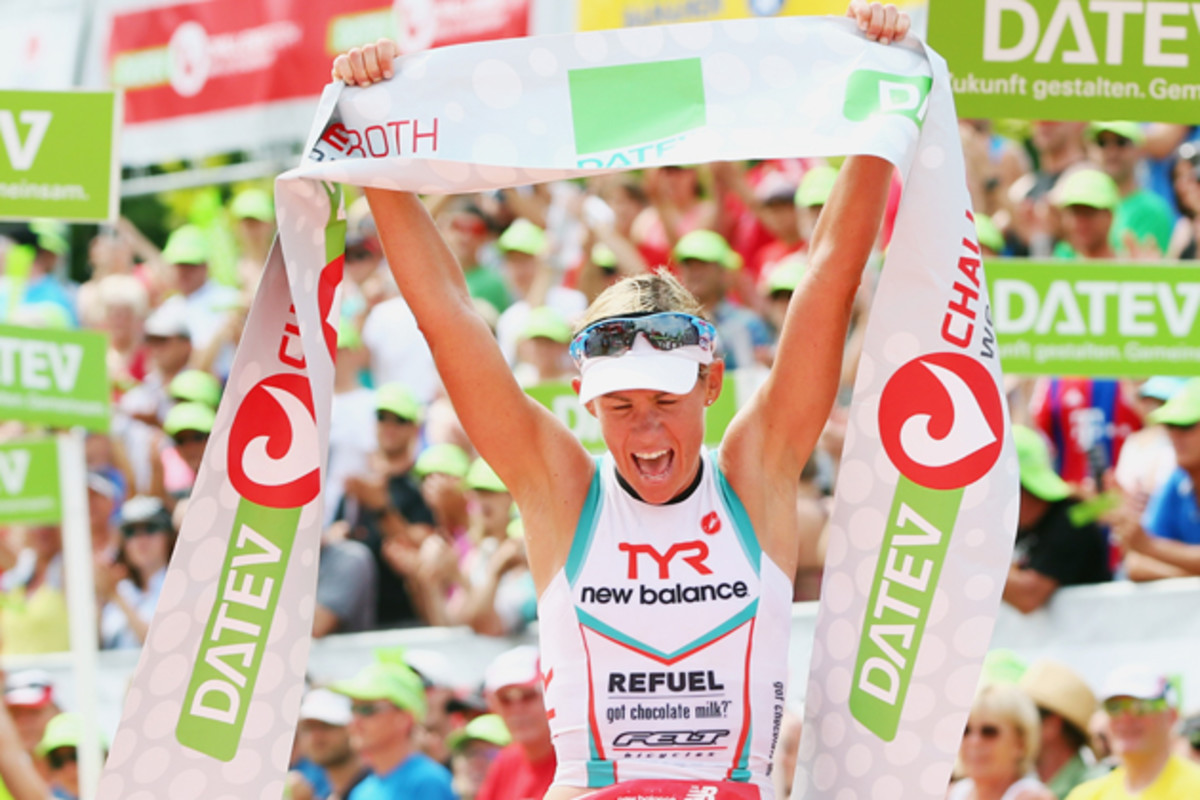
“The marathon is arguably the toughest aspect of the race and generally where you see those ugly, epic meltdowns. The day is heating up, and you’re in close proximity to the burning asphalt. I always put ice in my top and in my shorts, plus dump water on my head to try and stay cool. … [Coming] straight off the bike and onto the run, your legs inevitably feel like bricks for the first few miles. In training, a lot of runs are done directly off the bike in order to get used to that feeling and gain the confidence that you can successfully push through. The key is to focus on form. … Then, it’s all about finding the fastest pace you can sustain over the distance. At times you might feel wretched and have to ease up slightly; at other times you might feel like everything’s clicking and relatively easy, and you can test yourself and push a bit harder. But it’s always a balance of weighing your effort against the distance still ahead. On the best of days, even though it’s obviously incredibly hard, the run feels fluid and rhythmic, and in a sense, light.”
On keeping the body functioning at an optimal level during the IWC: “I use GU Energy Gels and GU Roctane electrolyte drinks on the bike to set the foundation for my day. The goal is to take in 1.5 grams of carbohydrates per kilogram of body weight, per hour. So for me, that's 75-80 grams of carbohydrates per hour on the bike. I also supplement with salt and a lot of water.
“On the run, I carry two GU flasks filled with GU Roctane gels. I don’t have a specific formula per hour but I rely on feedback from my stomach as to how much I need to ingest. I also [ingest] both water and Coke at every aid station. It’s not easy to drink very much while running fast, so I just do my best to get in as much fluid as possible without slowing down.”
Behind the Body: How to train like Ironman champion Sebastian Kienle
Craziest thing her body has been through during an Ironman race:
Let’s talk about mental health—140.6 miles can put a strain on the mind: “One of the most important factors is to stay focused on yourself and racing your own race to the best of your ability. In Kona especially, with so much pressure zeroed in on that one day, you really have to keep your mind as calm as possible and turned inward. And that starts well before the gun goes off. The intensity builds and builds, so you really have to become protective of your energy and time, and learn to stay calm and restful in the midst of it all. I have always been the sort of athlete that thrives on nervous energy and excitement, but I’ve also learned over the years—in Kona—the importance of that calm focus.
“During race week, my management team helps make sure that I don’t overdo it in terms of appearances or socializing. And it helps that Tim [O’Donnell] and I both race—we can be together as a couple and support one another; yet each of us is totally honed in on what we need for our own race.
“It’s the same thing on race day. Every single one of my rivals is on that same start line, and every single one of them wants that win. Trust me, I want to beat every one of them, but I don’t let my thoughts go to those athletes too much. … I’m confident that I’ve done what it takes to give my best performance on the day—I trust in that and follow my plan. So, while I do get into a zone—it’s [almost a] hypnotic rhythm when my run is going well—keeping the focus is a very pragmatic thing.
“There are times when negative thoughts start to creep in—when I’m hurting or down so far off the bike that a victory seems completely out of reach. When they do, I try to turn my thinking [toward] my body: How are my legs feeling? How’s my stomach? Do I need more GU? Are my arms relaxed? Am I hydrated? Can I push a little harder? I make sure everything is in order and firing on all cylinders. It’s a very practical way to keep myself in the moment.”
Guilty pleasure: Ice cream, burgers, fries, chocolate and “lots of wine.”
Favorite drink to celebrate with: Milkshakes, margaritas and wine. “Not all at once, though!”
GALLERY: Highlights from the 2014 Ironman championship
The 2014 Ironman World Championship in Kona
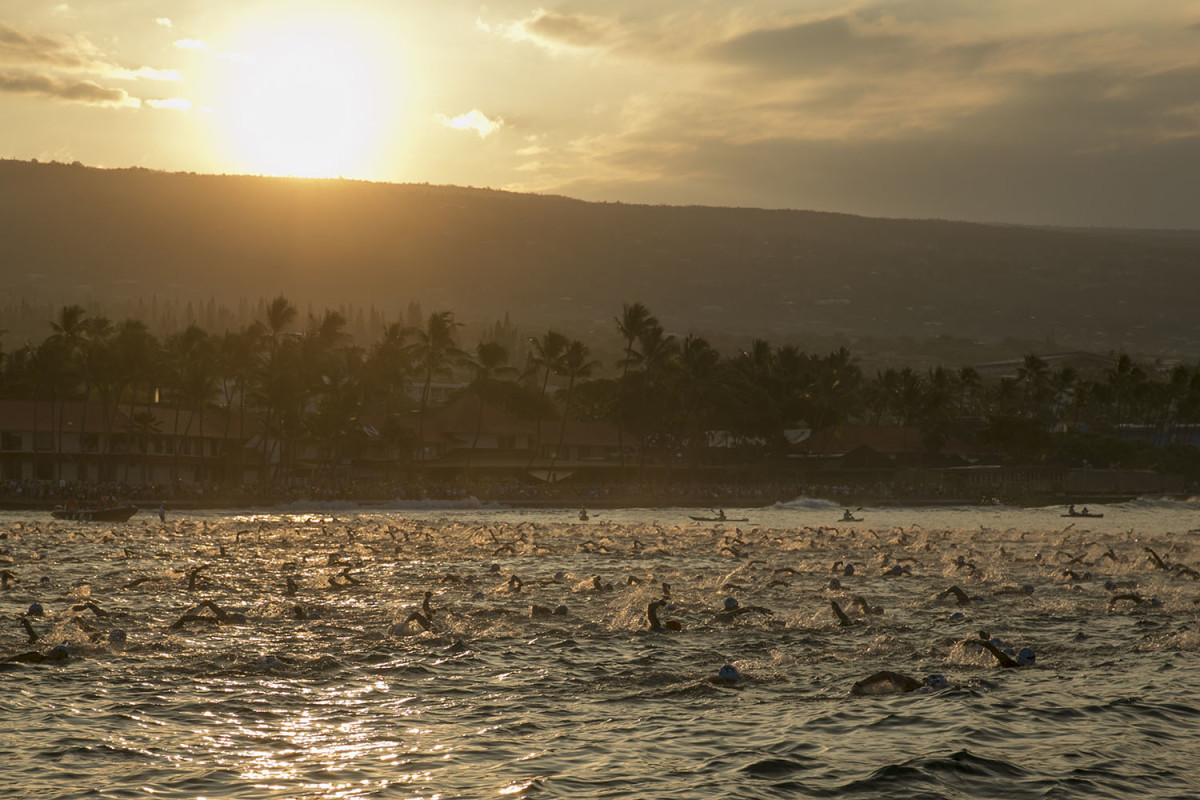
The sun rises over Mauna at the start of the IRONMAN World Championship.
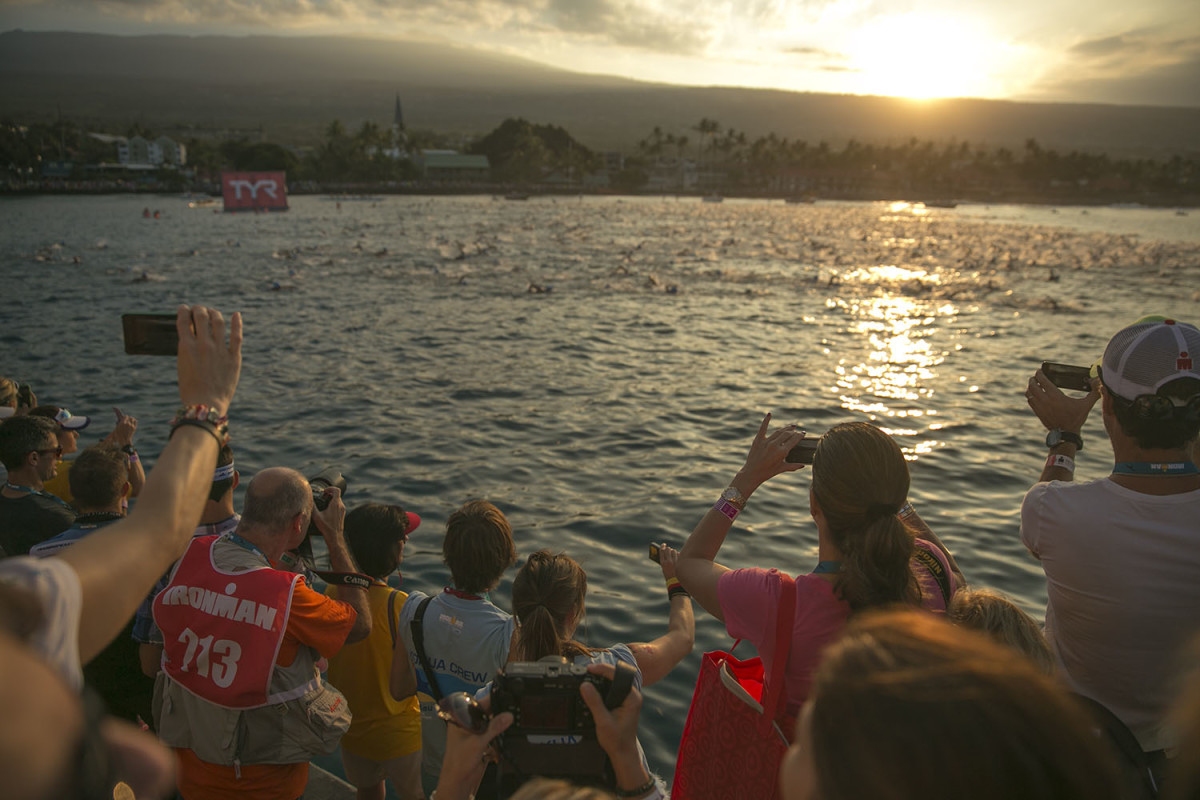
Onlookers watch the swimmers at the start of the race.
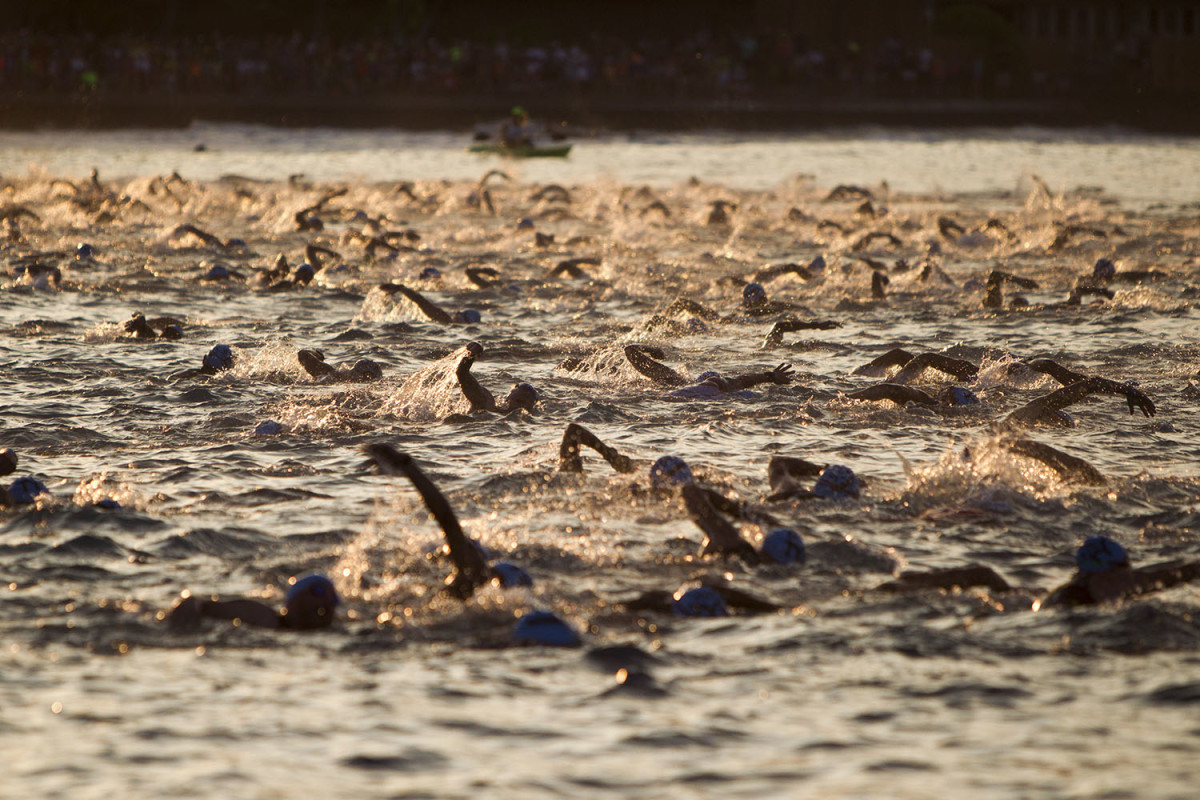
Swimmers are seen at dawn in the 2014 IRONMAN World Championship on Saturday, Oct. 11, 2014 in Kailua Kona, Hawaii.
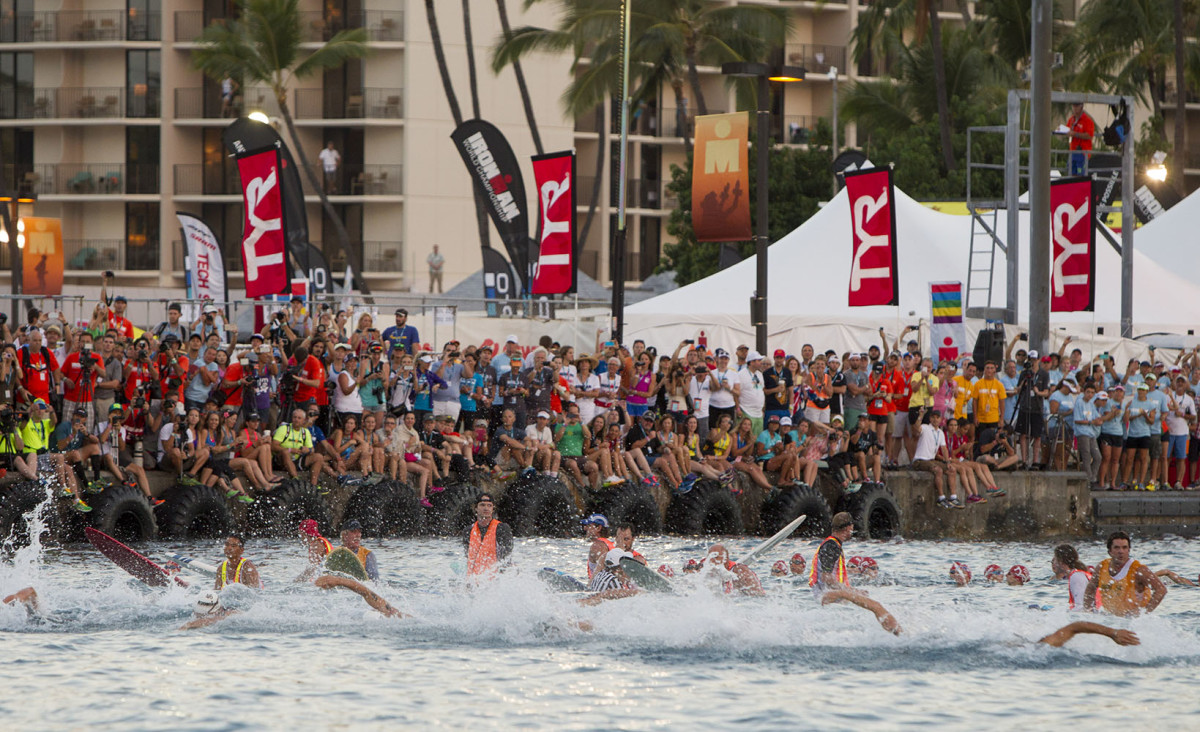
Swimmers are seen at the start of the 2014 IRONMAN World Championship.
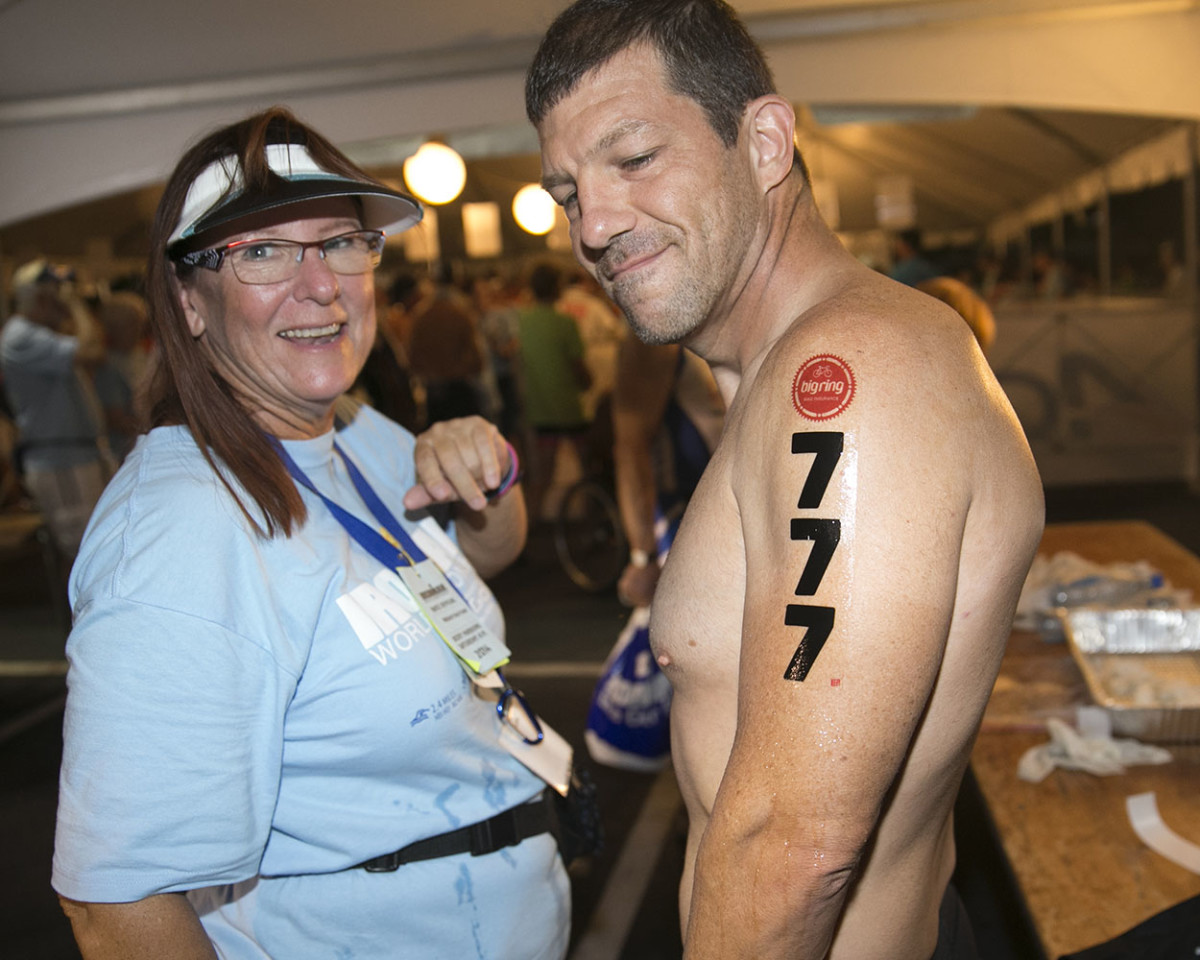
A race official places a body number on athlete Mike Avadikian before the start of the 2014 IRONMAN World Championship.
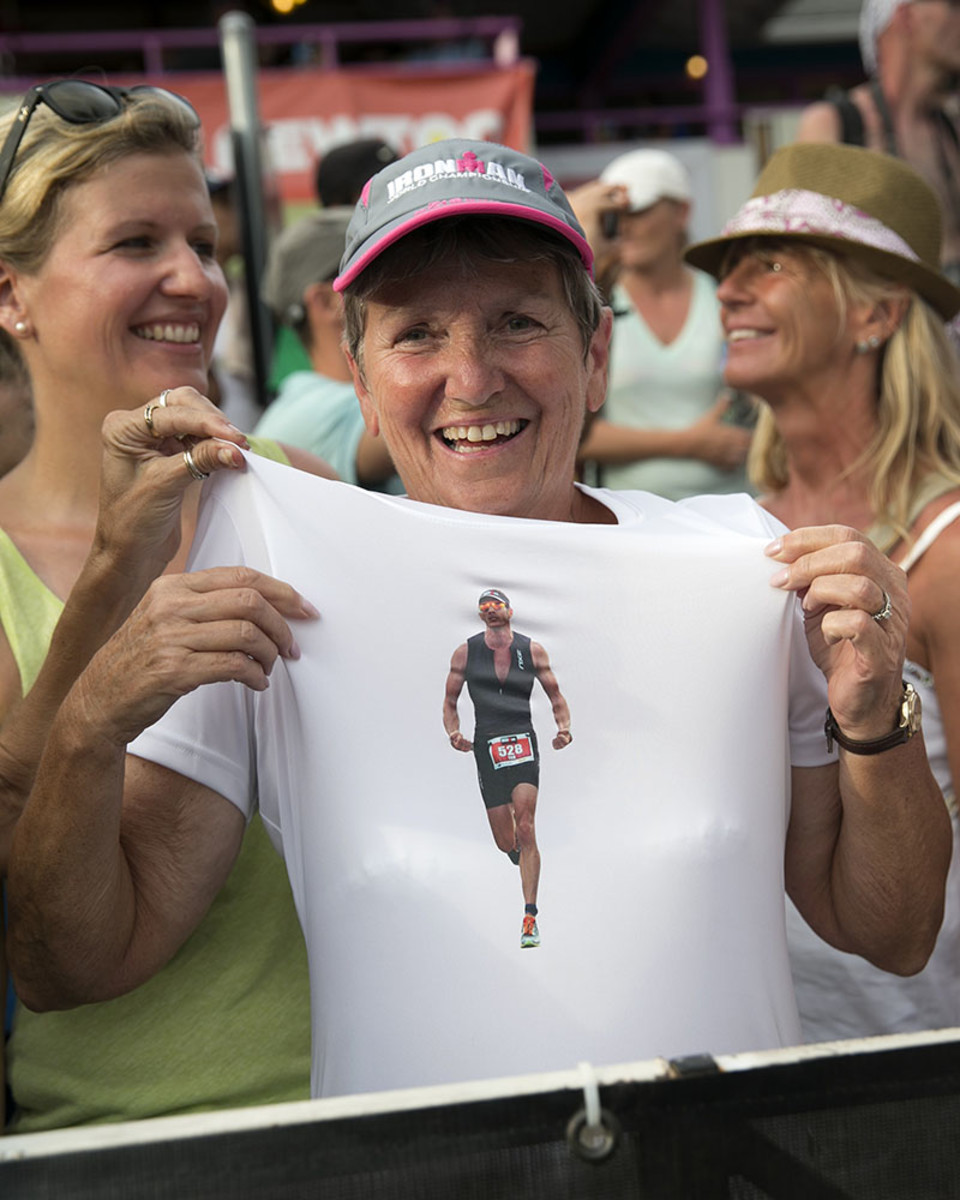
A fan wears a shirt of athlete David Arnold.
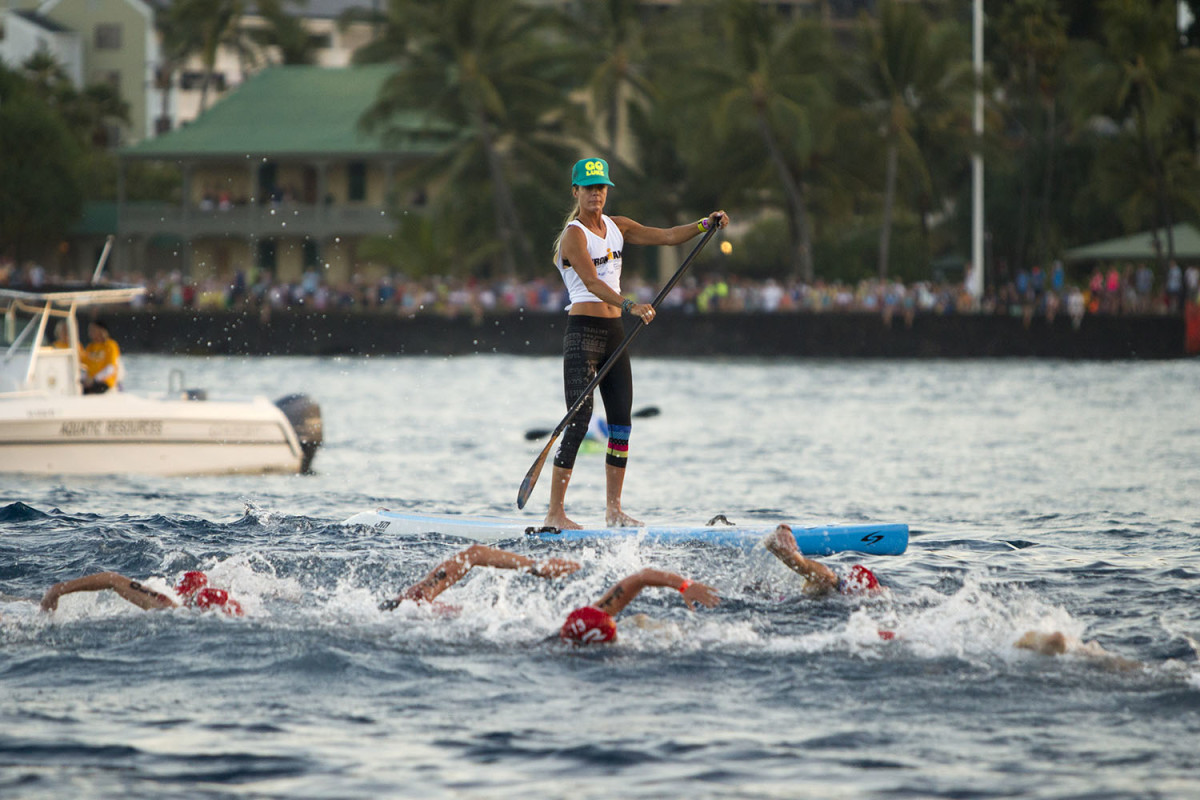
A paddle boarder watches over swimmers during the start of the 2014 IRONMAN World Championship.
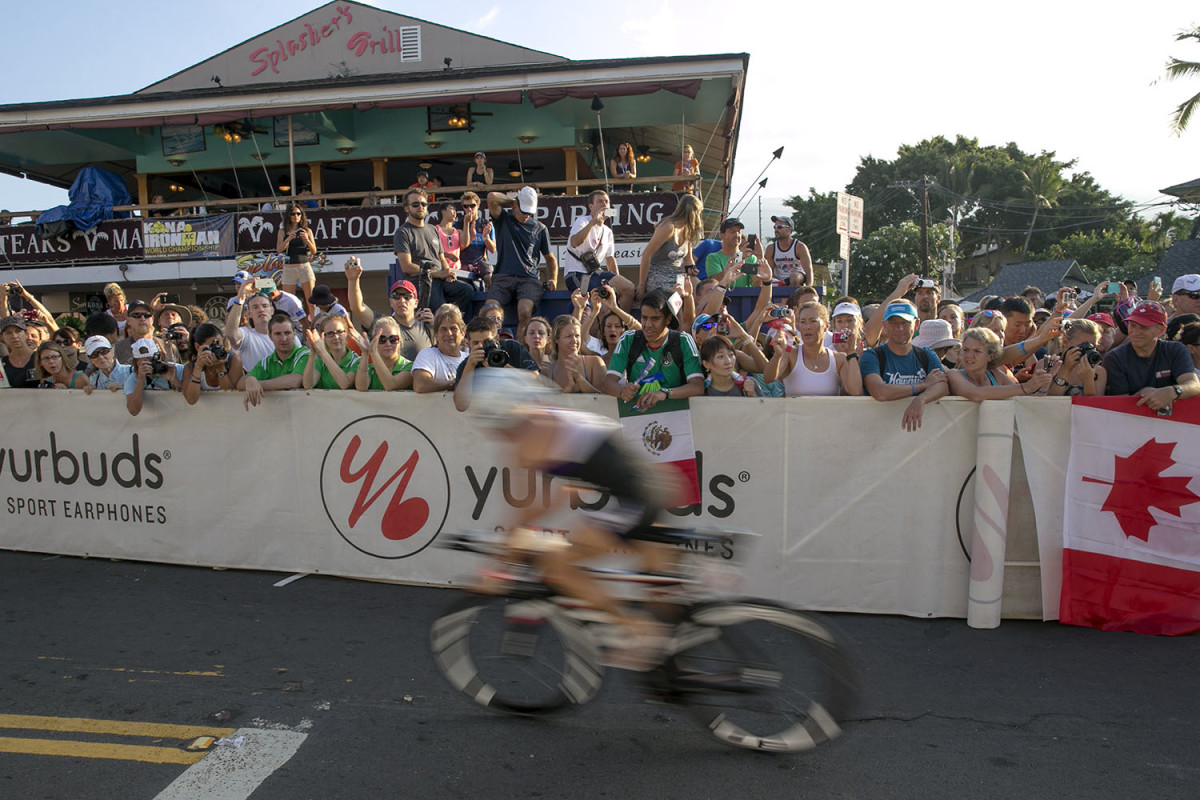
Onlookers watch bicyclist at the start of the 112-mile bike race of the 2014 IRONMAN World Championship.
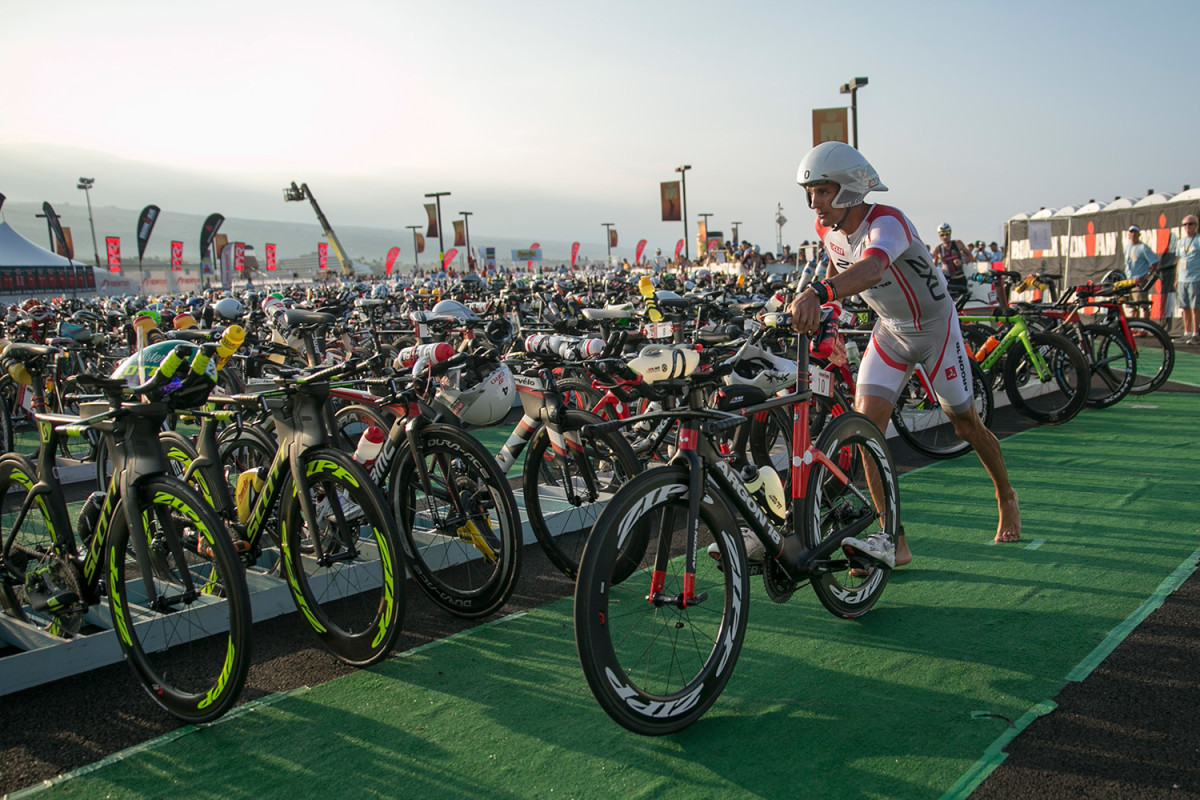
Terenzo Bozzone takes his bike out of the transition area before the start of the 112-mile bike race.
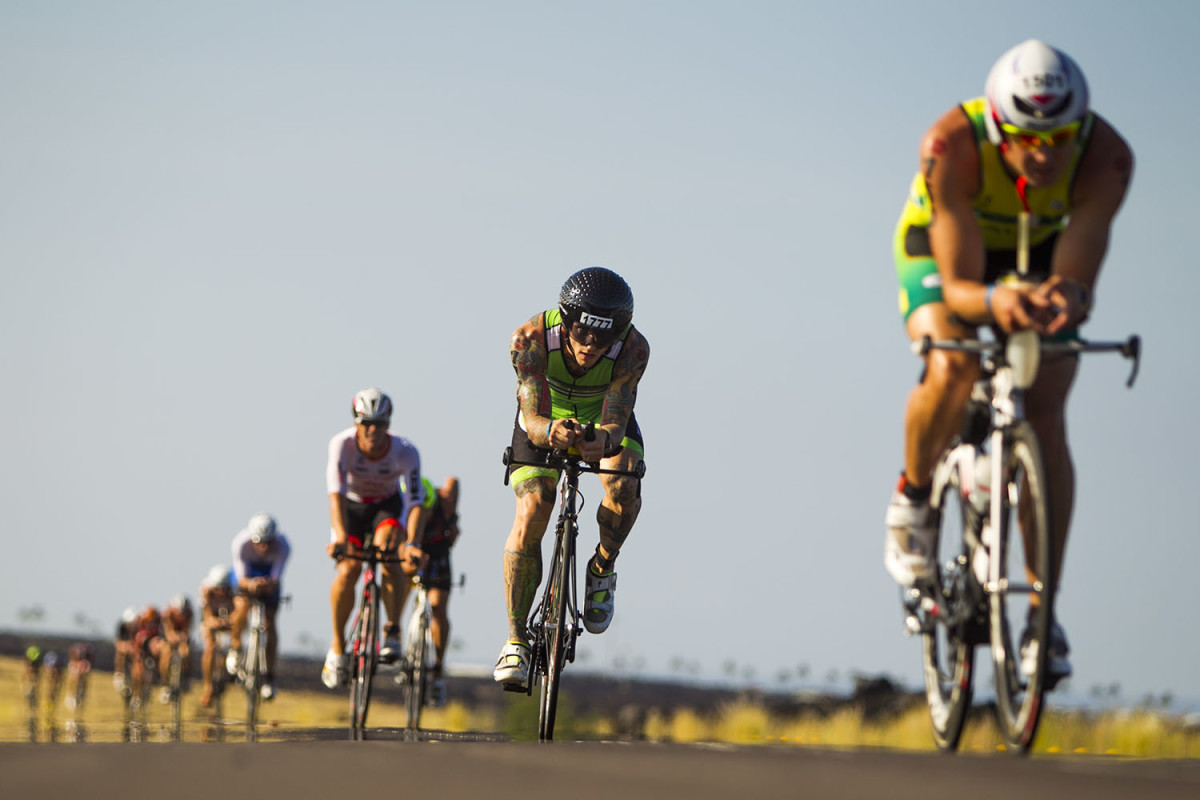
Age group racers hit the road during the 112-mile bike race.
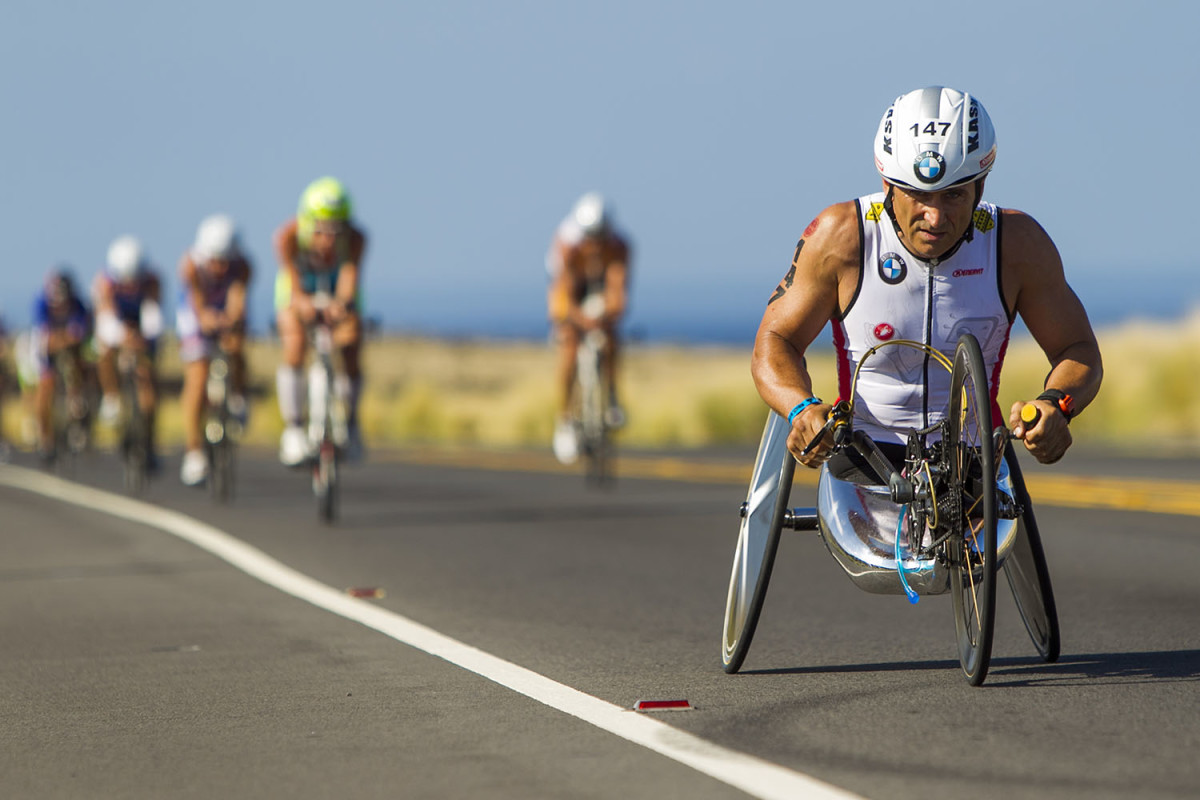
Paralympic handcycle champion Alex Zanardi leads a pack of racers during the 112-mile bike portion at the 2014 IRONMAN World Championship.
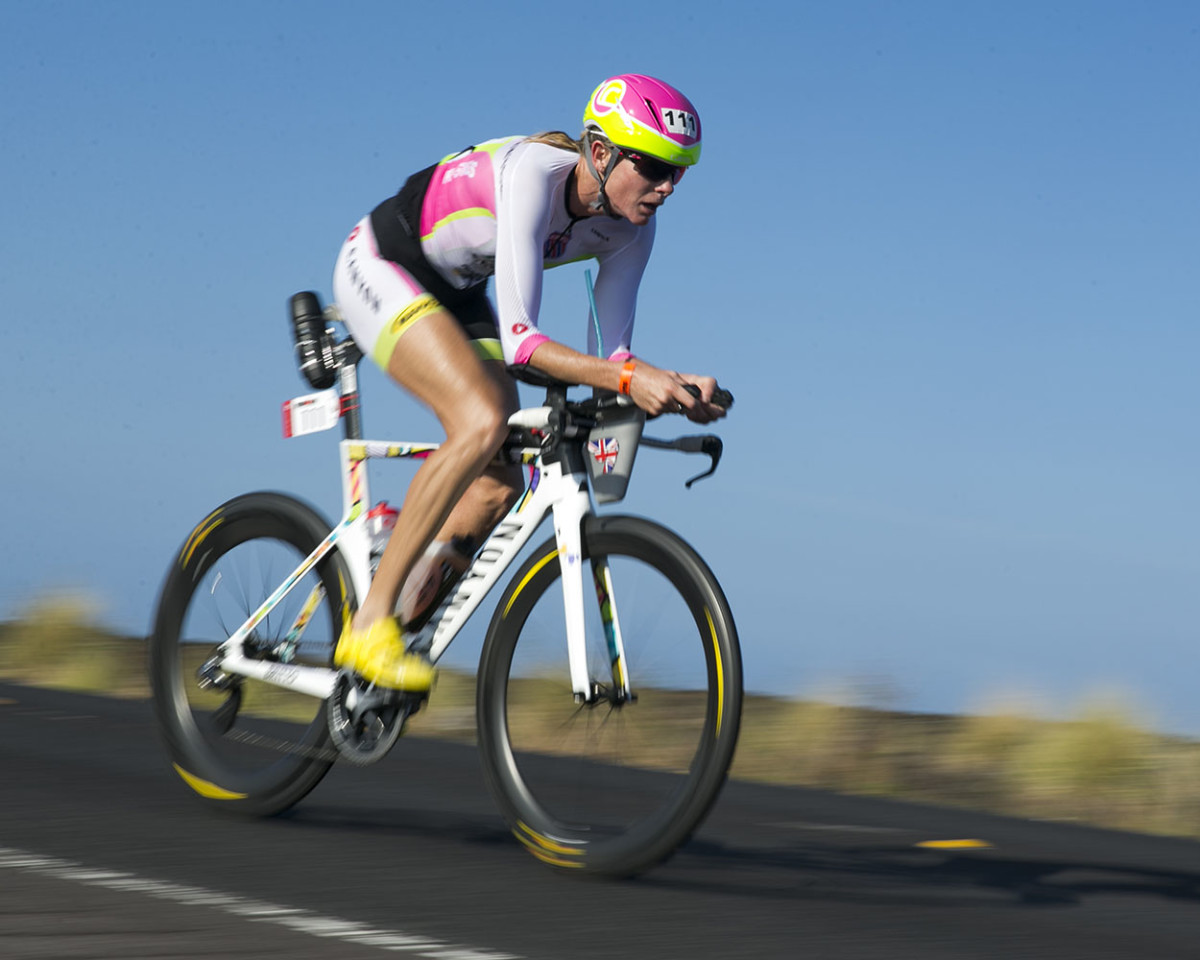
Leanda Cave zooms down the road during the 112-mile bike race.
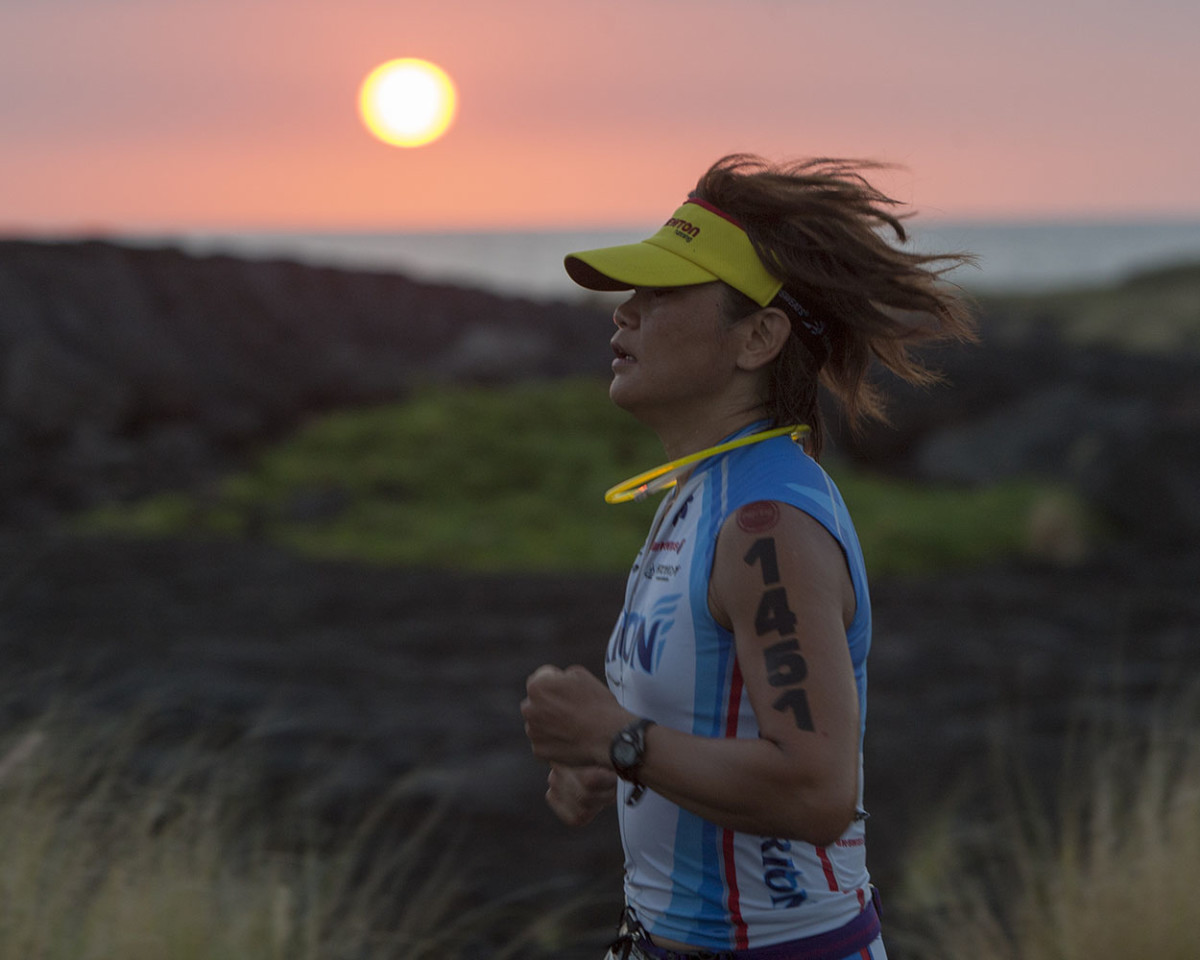
As the sun sets, Kaoru Suzuki runs the marathon during the 2014 IRONMAN World Championship.
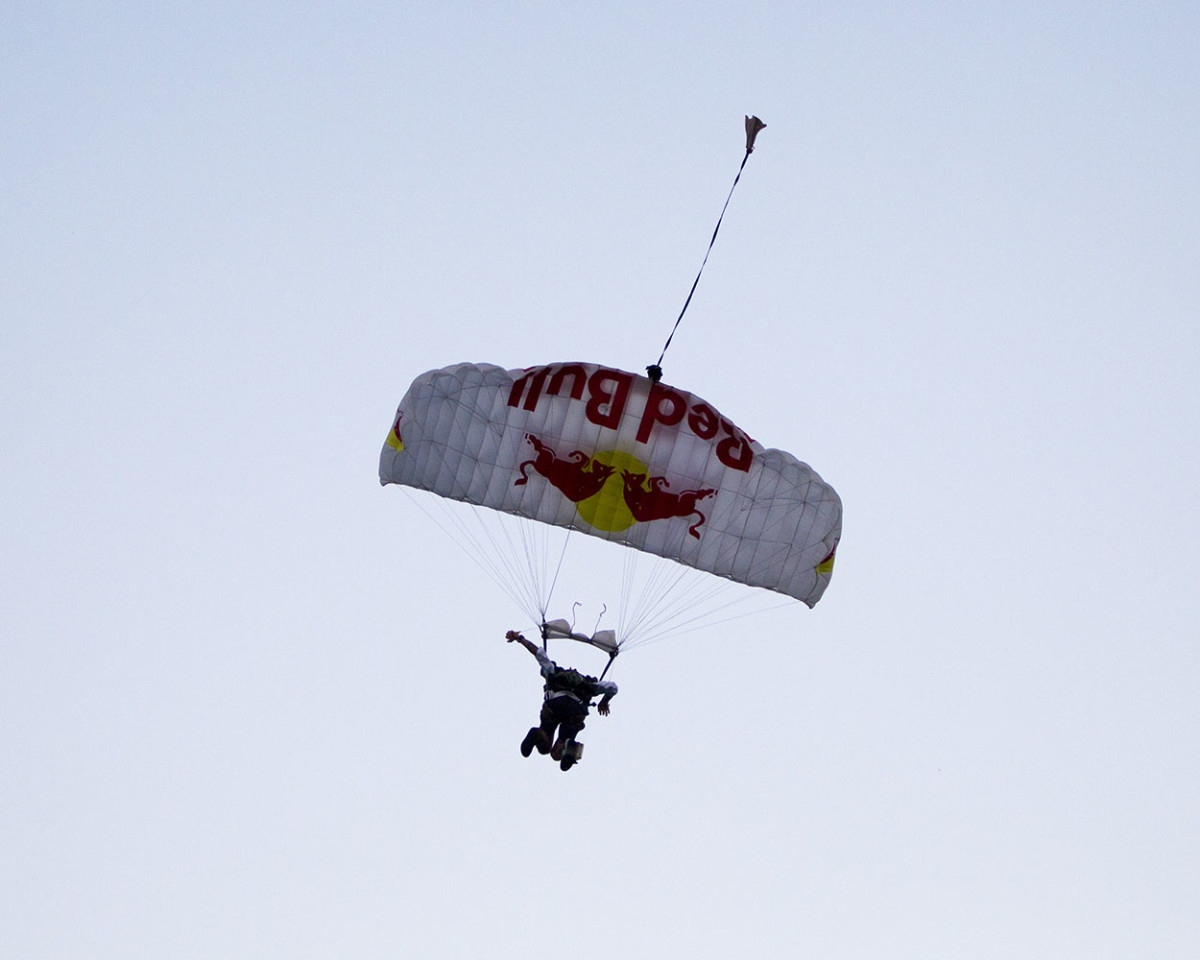
A Red Bull parachute team member jumps into the ocean before the start of the 2014 IRONMAN World Championship.
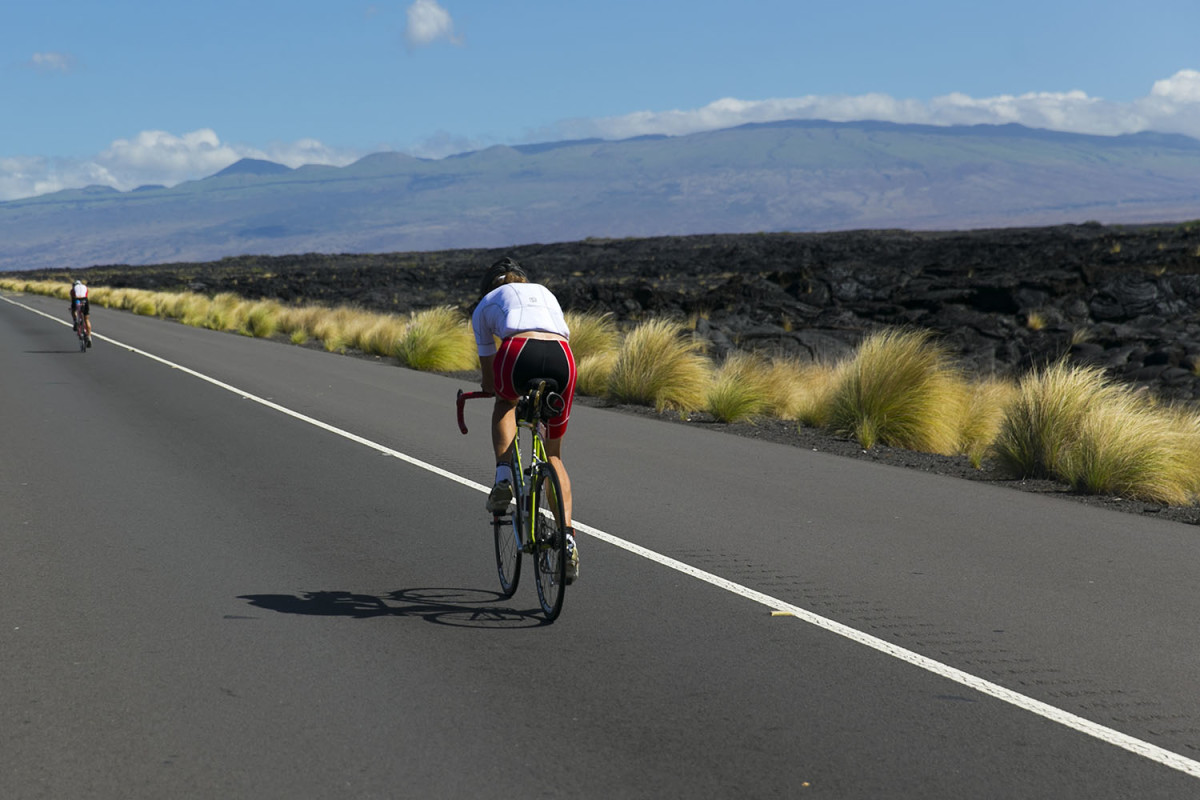
Athletes zoom down the road during the 112-mile bike race.
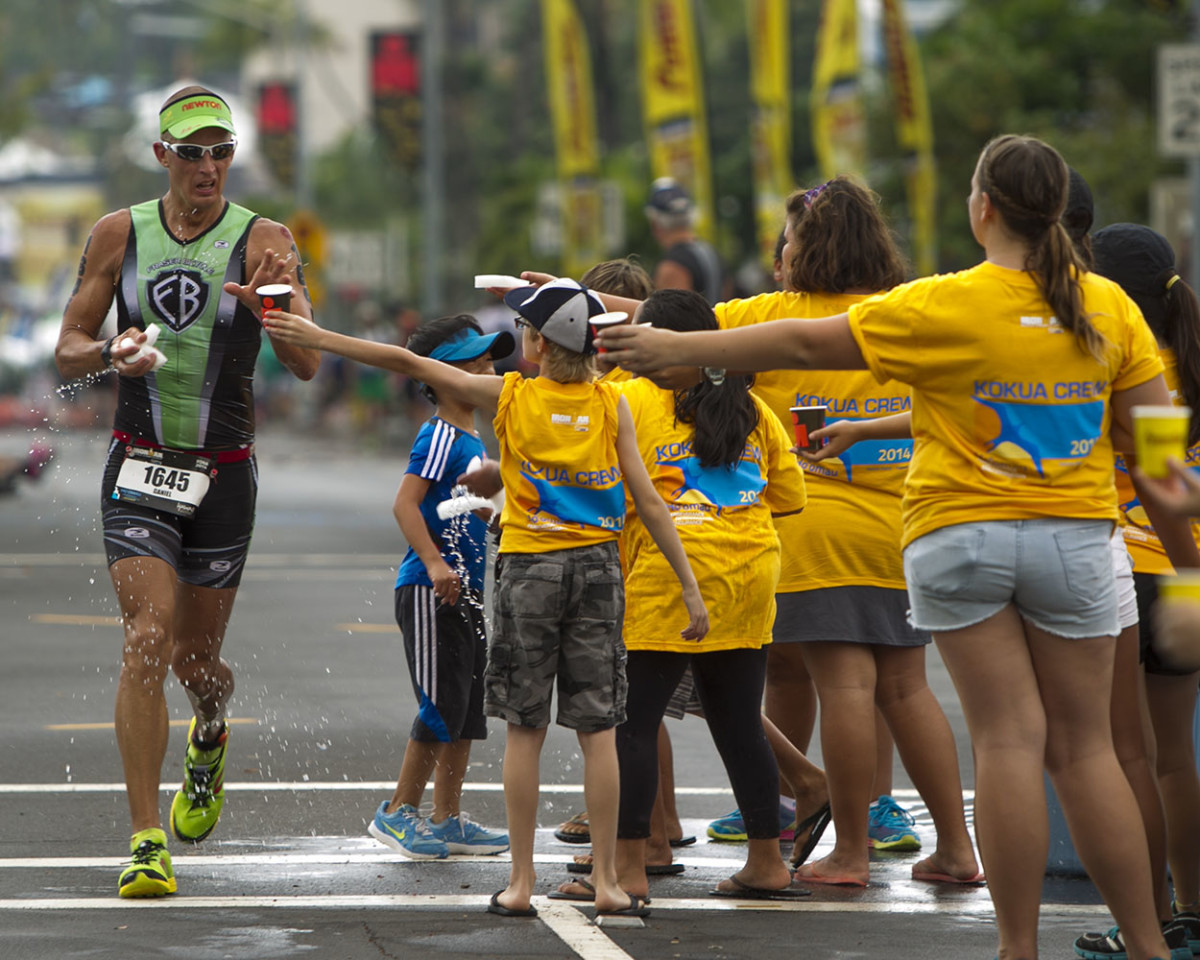
Daniel Stubleski grabs water from an aid station during the marathon portion of the 2014 IRONMAN World Championship.
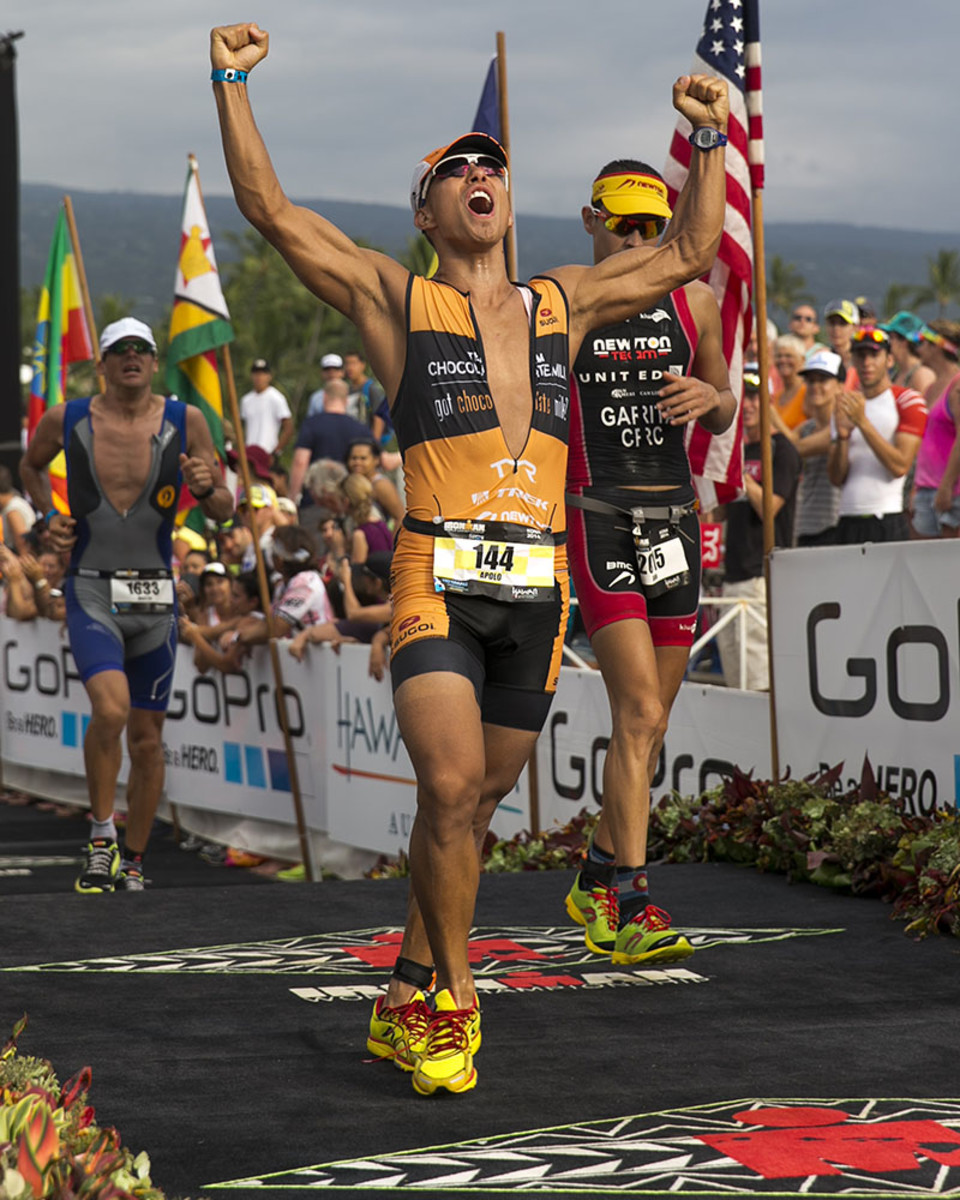
Former Olympian Apollo Ohno crosses the finish line at the 2014 IRONMAN World Championship.
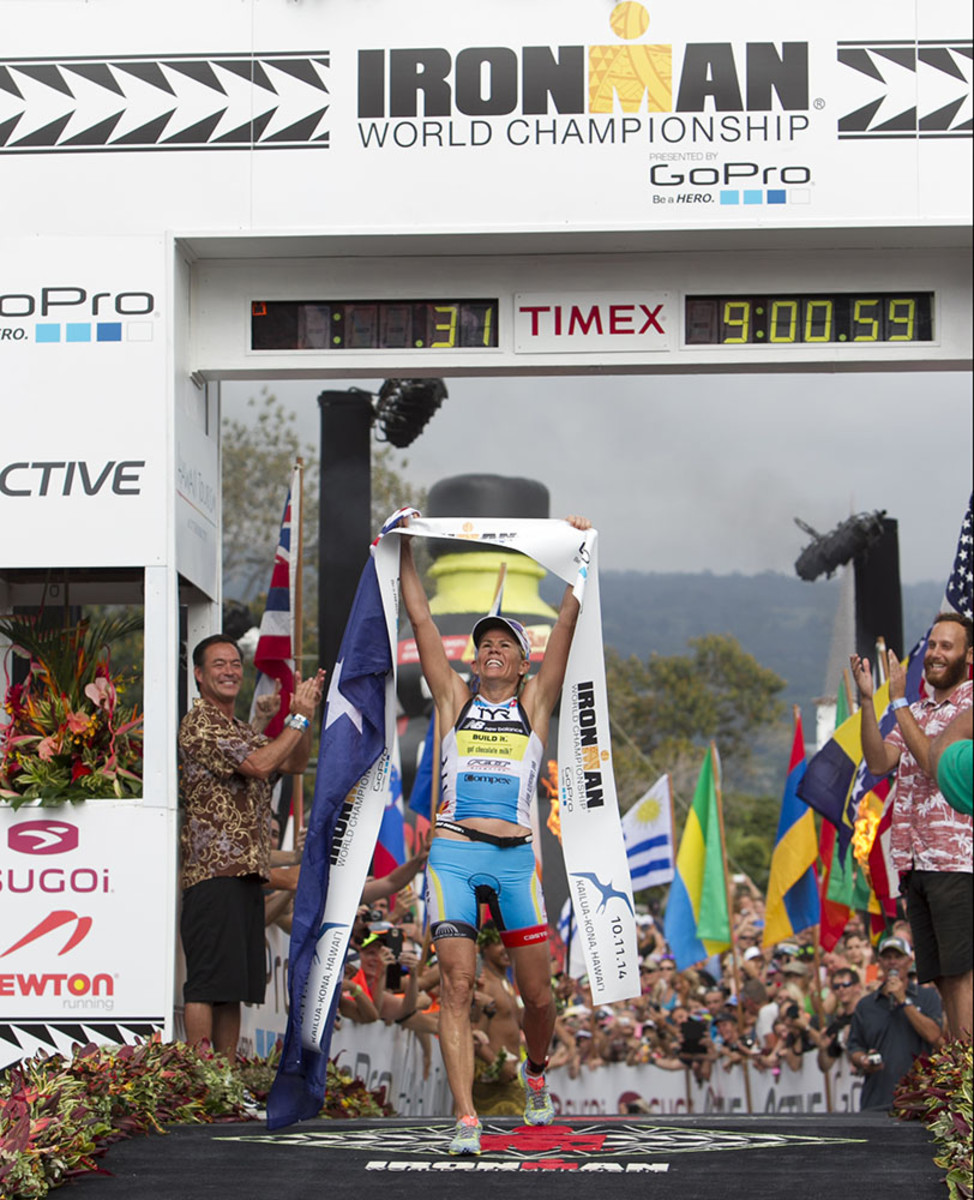
Mirinda Carfrae wins the woman's 2014 IRONMAN World Championship title.
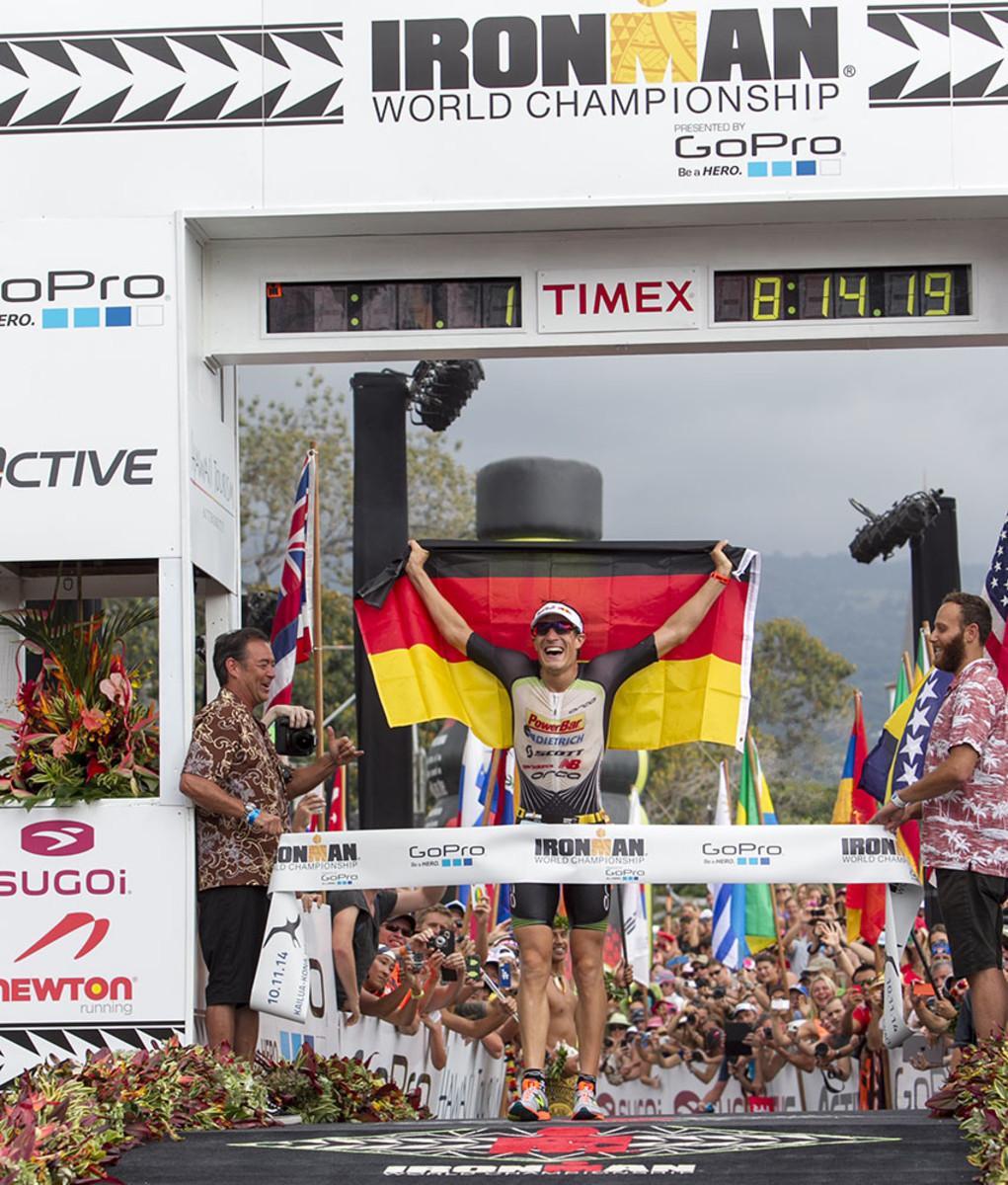
Sebastian Kienle wins the men's 2014 IRONMAN World Championship title.
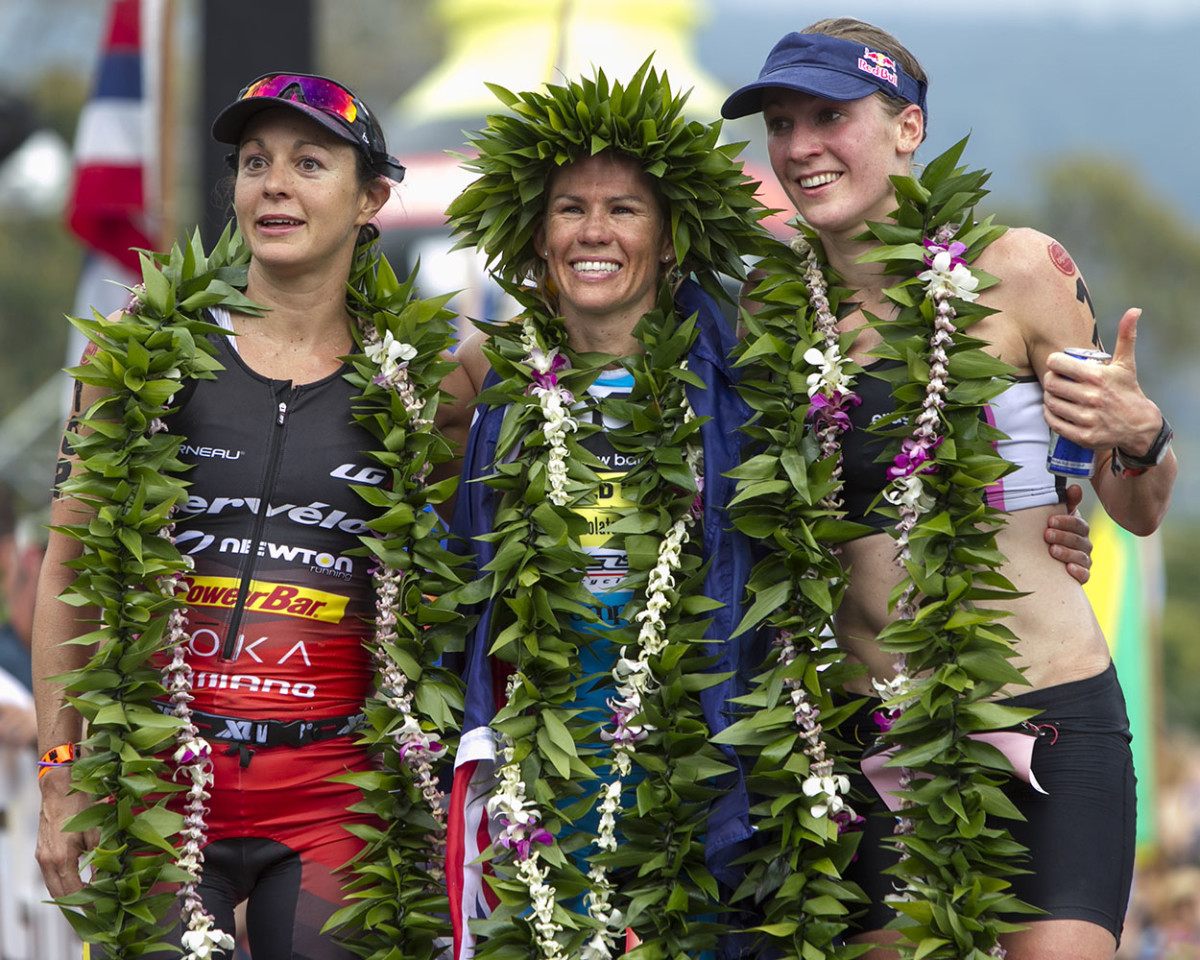
(Left to right) Rachel Joyce, Mirinda Carfrae and Daniela Ryf are seen at the finish line during the 2014 IRONMAN World Championship.
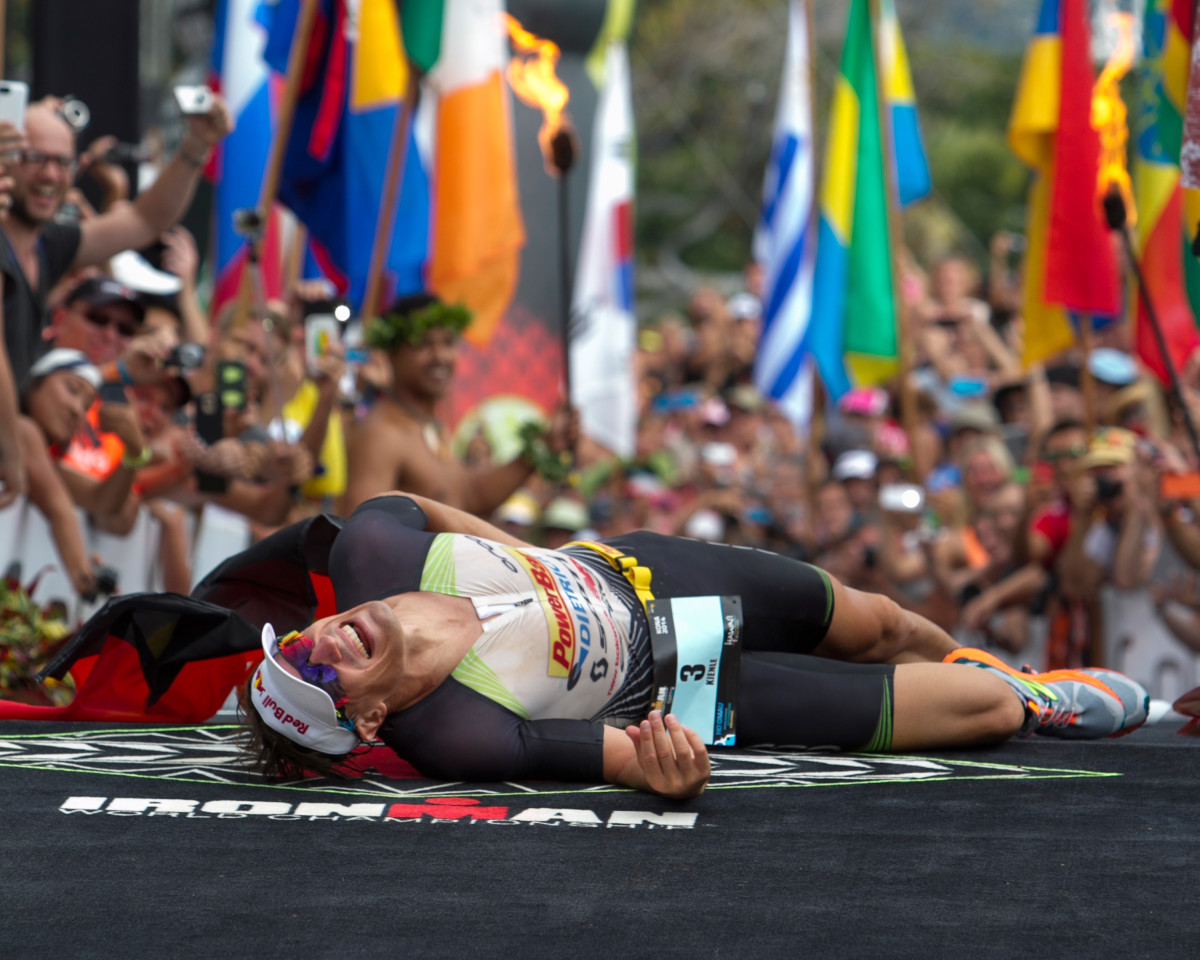
Sebastian Kienle reacts after winning the men's 2014 IRONMAN World Championship.
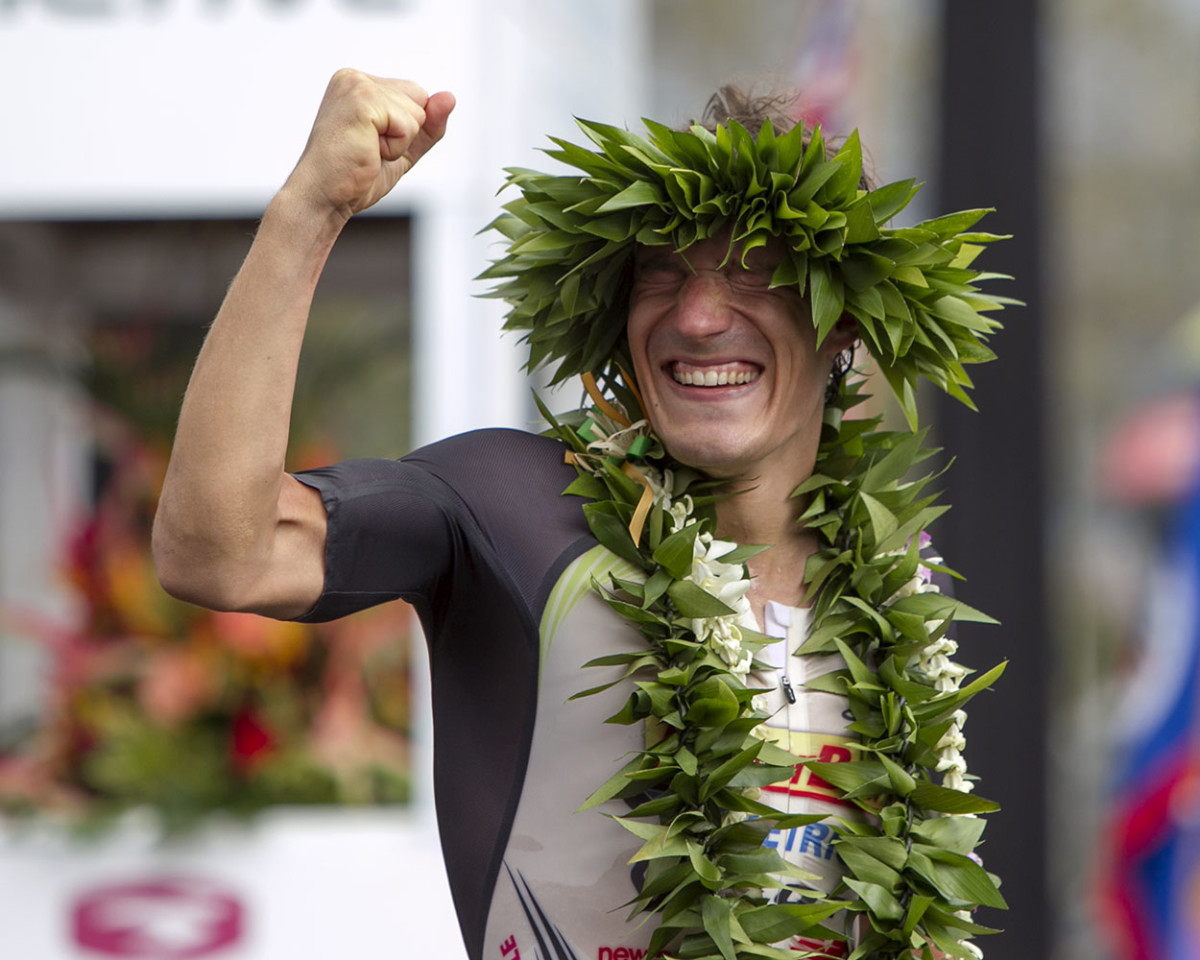
Sebastian Kienle reacts after winning the men's 2014 IRONMAN World Championship.
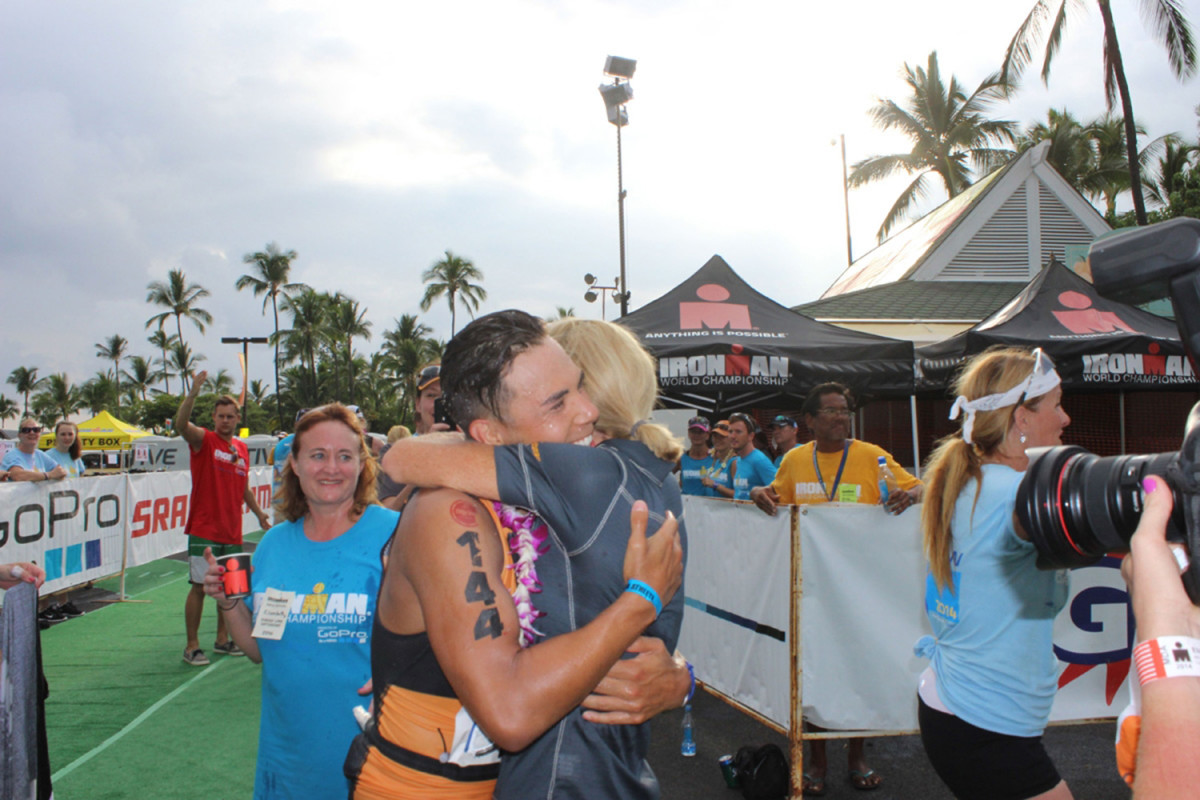
Apolo Ohno hugs coach Paula Newby Fraser after finishing the Ironman World Championship triathlon Saturday, Oct. 11 in Kailua-Kona, Hawaii.
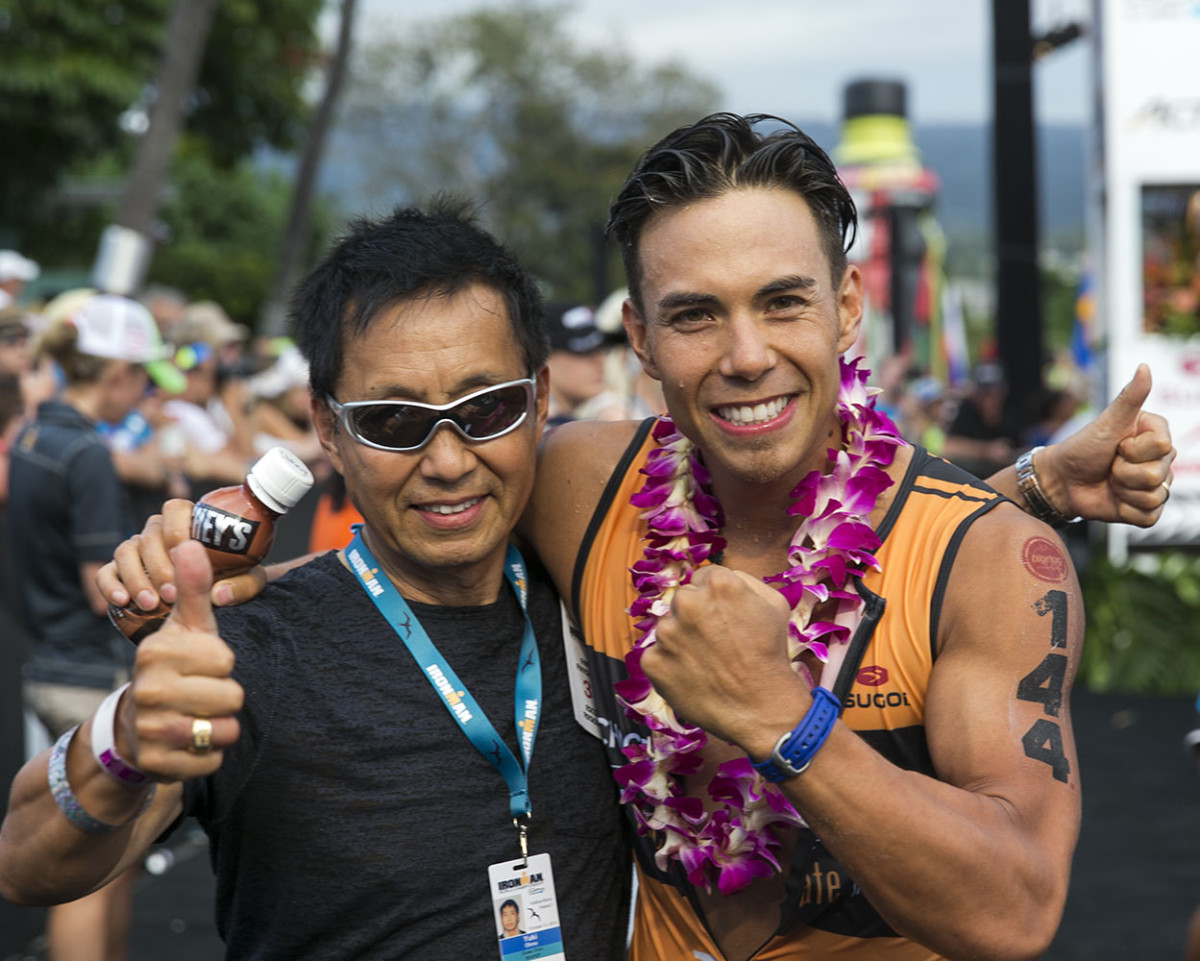
Former Olympian Apollo Ohno, right, poses with his father, Yuki Ohno after Apollo finished the 2014 IRONMAN World Championship.
